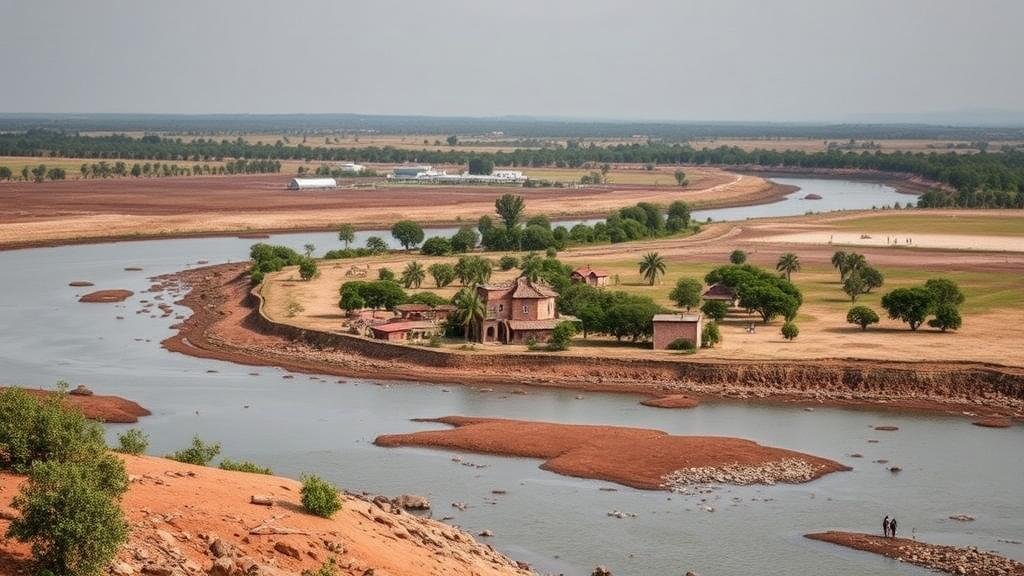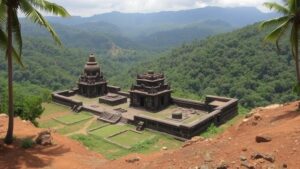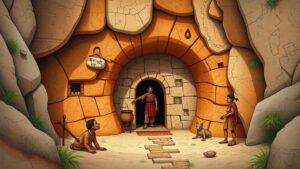Exploring the delta of the Niger River for traces of ancient West African urban centers.
Exploring the Delta of the Niger River for Traces of Ancient West African Urban Centers
The Niger River, one of the major rivers in West Africa, holds a pivotal role in the historical and cultural landscape of the region. It flows through several countries, including Guinea, Mali, Niger, Nigeria, Benin, and Togo, before emptying into the Gulf of Guinea. This article explores the Niger River Delta, a region often overlooked, yet rich in archaeological significance as a potential site for understanding the urban centers that thrived in ancient West Africa.
The Historical Significance of the Niger River
The Niger River has been a vital artery for trade, agriculture, and transportation for centuries. rivers delta has nurtured civilizations since antiquity, serving as a hub for various ethnic groups and peoples. For example, the cities of Kongo and Jenne-Jeno, which date as far back as the 3rd millennium BCE, were vibrant centers of commerce and culture along the river.
Archaeological findings suggest that the delta region was frequented by traders from as far as North Africa and Europe, showcasing the interconnected nature of ancient African empires. A significant example includes the trans-Saharan trade, which facilitated the exchange of goods like gold, salt, and textiles, thus enriching the urban landscape of the time.
In recent years, archaeological efforts have intensified in the Niger River Delta area, revealing numerous artifacts that speak to its historical significance. Surveys have unearthed:
- Potsherds and ceramic fragments that indicate the presence of craftsmanship and trade.
- Iron smelting sites, highlighting the advanced metallurgical skills of ancient populations.
- Burial sites adorned with intricate jewelry, offering insights into the social structures and beliefs of the time.
For example, a groundbreaking excavation in 2014 near the town of Benin City uncovered remnants of a large settlement that dates back to the 10th century CE. This site has been linked to the historic Benin Kingdom, demonstrating a complex urban planning system, complete with walls and roads, akin to contemporary cities.
The Urban Centers of Ancient West Africa
A deeper understanding of urban centers like Kano, Timbuktu, and Jenne can be gleaned from their connections to the Niger Delta. These urban areas exhibited advanced organizational structures, trade networks, and cultural developments that were fostered by the river. For example:
- Kano became a flourishing market town by capitalizing on the trade routes accessible via the Niger River, ultimately becoming a significant center for commerce and education.
- Timbuktu, known for its scholarly contributions, developed as a crucial node for traders facilitating the exchange of knowledge, particularly in areas like mathematics and astronomy.
These cities are representative of the sophisticated society that characterized ancient West Africa, and their connection to the Niger River Delta offers clues about socio-economic systems that allowed such urban centers to develop.
Challenges in Exploration and Preservation
While exploration of the delta reveals much about ancient urban centers, several challenges hinder archaeological efforts. These include:
- Environmental degradation due to oil extraction and pollution, jeopardizing archaeological sites.
- Political instability in the region, which can affect funding and support for excavations.
- Deforestation and urbanization, leading to the loss of significant historical sites.
The preservation of these sites is critical not only for archaeological research but also for understanding the rich history of West Africa. Collaboration between governments, local communities, and international organizations is essential for mitigating these challenges.
Real-World Applications of Research
The discoveries made in the Niger Delta have far-reaching implications. can inform contemporary urban planning, cultural heritage conservation, and education. By studying ancient urban centers, modern policymakers can draw lessons about sustainable growth and community organization that were successfully implemented in the past.
Also, the regions rich history can enhance tourism, attracting visitors interested in exploring West African heritage and education, which can in turn drive local economies.
Conclusion: The Future of Research in the Niger Delta
Exploring the Delta of the Niger River offers profound insights into ancient urban centers of West Africa. The intersection of archaeology, history, and contemporary challenges presents a unique opportunity for future research endeavors.
As investigations continue to unearth valuable artifacts and knowledge, it is crucial for stakeholders to prioritize the preservation of this invaluable resource. By doing so, we ensure that the legacy of ancient West African civilizations remains intact for future generations to study and appreciate.
Through exploration, education, and preservation, the Niger River Delta can continue to illuminate the rich tapestry of human history in West Africa.



